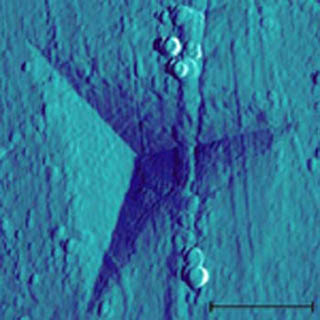
Examining a material's response to nanoindentation can lend insight to the microstructural and molecular determinants of its mechanical properties. (Image by Prof. Van Vliet and Dr. Catherine Tweedie. Used with permission.)
Instructor(s)
Prof. John Vander Sande
Prof. Krystyn van Vliet
MIT Course Number
3.032
As Taught In
Fall 2007
Level
Undergraduate
Course Description
Course Features
Course Description
Here we will learn about the mechanical behavior of structures and materials, from the continuum description of properties to the atomistic and molecular mechanisms that confer those properties to all materials. We will cover elastic and plastic deformation, creep, and fracture of materials including crystalline and amorphous metals, ceramics, and (bio)polymers, and will focus on the design and processing of materials from the atomic to the macroscale to achieve desired mechanical behavior. Integrated laboratories provide the opportunity to explore these concepts through hands-on experiments including instrumentation of pressure vessels, visualization of atomistic deformation in bubble rafts, nanoindentation, and uniaxial mechanical testing, as well as writing assignments to communicate these findings to either general scientific or nontechnical audiences.


